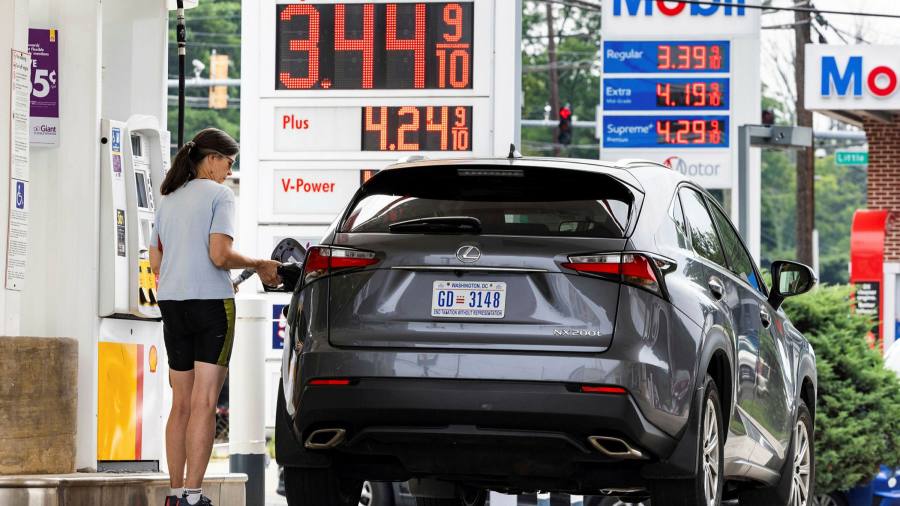
The pace of US consumer price increases accelerated unexpectedly in June, challenging the view within the Federal Reserve and White House that high inflation during the US recovery will be temporary.
The consumer price index rose last month at the fastest pace since August 2008, up 5.4 per cent from the previous year — well above the 5 per cent rise reported in May and the 4.9 per cent increase that economists had forecast.
On a monthly basis, data released by the Bureau of Labor Statistics showed price gains of 0.9 per cent, the biggest one-month jump since June 2008.
Stripping out volatile items like food and energy, “core” US CPI rose from 3.8 per cent in May relative to the year before to 4.5 per cent in June.
Investors, economists and policymakers have scrutinised incoming inflation figures amid a fierce debate about the risk of runaway consumer prices fuelled by ultra-accommodative fiscal and monetary policy.
Price jumps have so far been most significant in sectors directly affected by the coronavirus pandemic. Travel-related expenses, such as airfares, have soared, while a semiconductor shortage has contributed to a jump in the prices of used cars.
One-third of the rise in the CPI last month stemmed from a record jump in previously-owned vehicle prices, according to the Bureau of Labor Statistics. They rose 10.5 per cent in June from the previous month.
The US central bank has this year characterised elevated inflation prints as “transitory”, which will fade as Covid-19 lockdowns ease further and supply catches up with pent-up demand.
In June, Fed officials predicted that their preferred gauge of core inflation would rise by 3 per cent this year, before drifting back down to 2.1 per cent in 2022. But the surprisingly high inflation reading on Tuesday could put pressure on the central bank to consider slowing monetary stimulus by reducing asset purchases more quickly than previously thought.
Jay Powell, the Fed chair, is set to face questions from members of Congress on Wednesday and Thursday this week.
“There appears little reason to continue with Federal Reserve QE asset purchases of $120bn per month, and we will look to Jerome Powell’s testimony tomorrow and the August Jackson Hole Conference for hints of an upcoming taper,” said James Knightley, ING’s chief international economist.
Biden administrations officials have also expressed confidence that the surge in prices would abate, and defended that view after the data were published.
The White House’s Council of Economic Advisers on Tuesday stressed in a series of tweets that, outside of disruptions related to the pandemic and supply chain issues, core CPI had risen by 0.22 per cent month-over-month, relative to 0.28 per cent in May and 0.31 per cent in April.
“We’re at a place where a set of pandemic related services are still normalising their prices back to where they were before the pandemic. We’re in a world where we see a very concentrated bottleneck around autos . . . and everything else in the core series we’re seeing deceleration,” a White House official said on Tuesday.
However, Republican lawmakers pounced on the figures, blaming the Biden administration’s big fiscal stimulus policies for dangerously overheating the economy.
“Inflation is taxation!”, tweeted Elise Stefanik, a congresswoman from New York state and a member of her party’s leadership in the House of Representatives.
“Families are feeling it everywhere — from the supermarket to the gas pump to housing to the used car lot. And beyond,” Mitch McConnell, the Republican leader in the Senate, said in a speech. “All thanks, in large part, to the Democrats’ half-baked spending spree from the springtime,” he added.
US government bonds seesawed after Tuesday’s release, with yields initially moving higher off of the recent lows seen since the Fed’s meeting on monetary policy in June, which raised the prospect of a quicker withdrawal of accommodation than initially expected.
The benchmark 10-year note later reversed course, until a weak auction of 30-year Treasury debt jolted markets. Yields climbed 0.05 percentage points on the day to 1.42 per cent.
https://news.google.com/__i/rss/rd/articles/CBMiP2h0dHBzOi8vd3d3LmZ0LmNvbS9jb250ZW50LzIzNGE5YjkwLWU0ZjYtNGI1OS05ZTM5LWM2ZTM0YWM3ODI3NtIBP2h0dHBzOi8vYW1wLmZ0LmNvbS9jb250ZW50LzIzNGE5YjkwLWU0ZjYtNGI1OS05ZTM5LWM2ZTM0YWM3ODI3Ng?oc=5
2021-07-13 17:45:22Z
52781730339841
Tidak ada komentar:
Posting Komentar